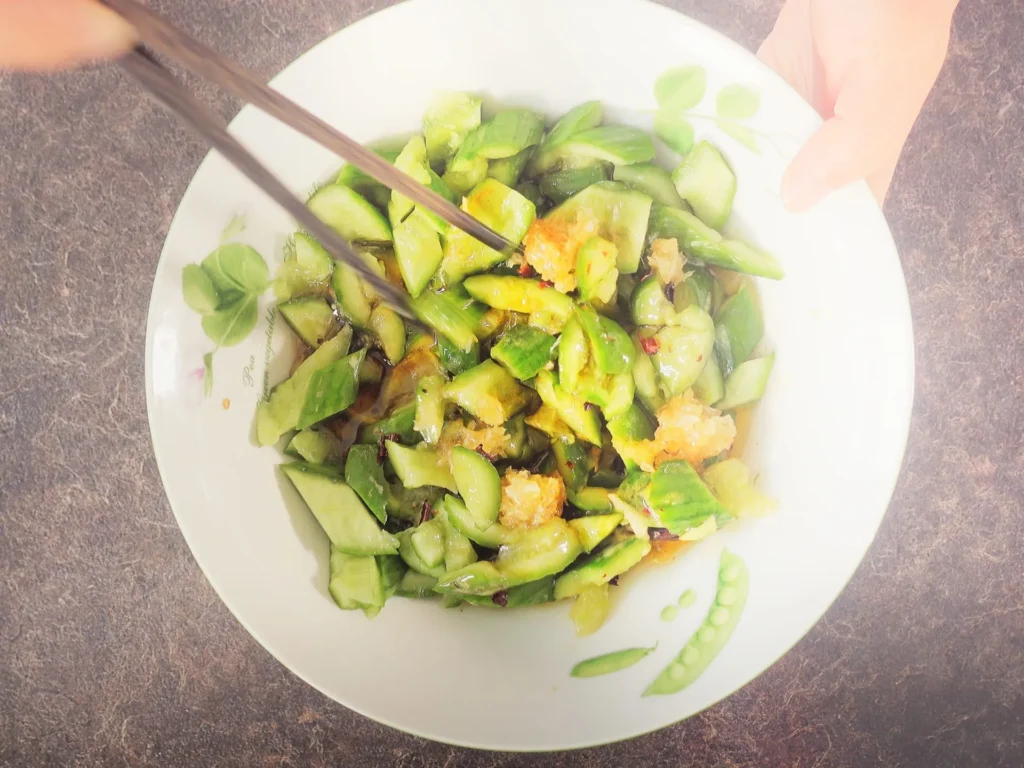
Chinese Cool Cucumber Salad
If you’ve spent any time in China, you’ve almost certainly had pai huang gua (拍黄瓜). This dish is a refreshing cold cucumber dish, perfect for hot summer days. There are countless variations of this ubiquitous dish in China. Common to all the variations is the use of garlic and rice vinegar. The pleasant sourness of the vinegar adds to the refreshing nature of cool cucumbers for me. Hot peppers to add spiciness is common variation, as is adding touch of sweetness. Sometimes peanuts are added. Feel free to experiment and make this recipe your own.
A Little Food Culture
In China, many people believe that all foods have their own nature and health effects, a wisdom that we in the West are slowly coming to appreciate. The most generalized categorization of the nature of foods is “hot” versus “cold” foods. This doesn’t refer to the temperature of the food or ingredient, but rather its overall effect on the body – heating or cooling the body. Cucumbers are “cold” with a cooling effect on the body. In China, cucumbers are believed to detoxify the body and remove dampness and heat. While cucumbers are relatively low in vitamins compared to many other vegetables, they are high in fiber, low in calories and, in China the succinic acid in cucumbers is thought to decrease the conversion of carbohydrates to fat promoting weight loss (you might take this last bit with a grain of salt: I don’t have physiological research to back it).
A Note on the Terminology:
Speaking and reading some Chinese after years of study, I always find Chinese linguistics fascinating. Cucumber in Chinese is “huang gua”, which literally translates to “yellow gourd/squash/melon”. I thought two things were strange about the name. Why are watermelons, cucumbers, squash, pumpkins and cantaloup all grouped together as “gua” in Chinese? Looking into the biology of this, I realized it totally makes sense: all the vegetables and fruits that are types of “gua” in Chinese are from the Cucurbitaceae family of plants. My second question about the name of the cucumber is why is it a “yellow gourd” and not a “ green gourd”? I’ve heard two answers to that. The less satisfying one is that cucumbers turn yellow as they age. The more satisfying one (especially pertinent to beekeepers) is that the cucumber flower is yellow.
The “pai” in “pai huang gua” means “smashed” or “to smash”. As Carol demonstrates in the video recipe smashing the cucumbers is an essential part of making pai huang gua cucumber salad. Smashing allows the flavors to meld better, and gives the dish its characteristic texture or mouthfeel. It’s also part of the heritage of this dish: you can’t have pai huang gua if you don’t pai the huang gua.
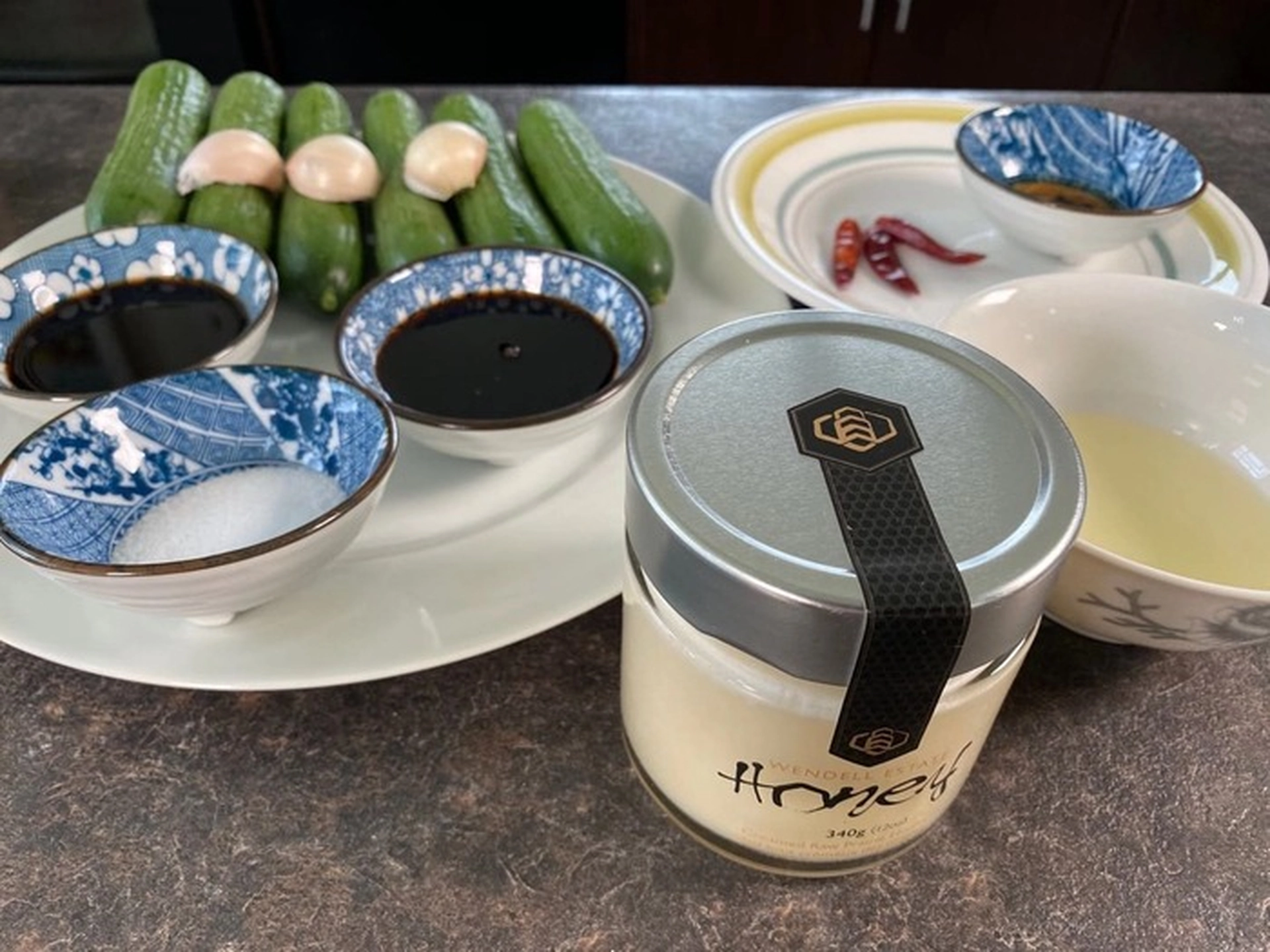
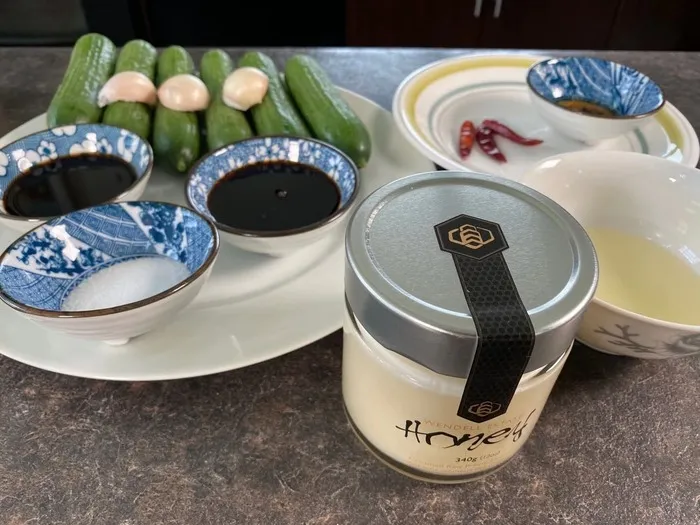
The Recipe
In Carol’s recipe below, she uses raw honey to add a subtle touch of sweetness to dish. There’s good evidence that raw honey does promote weight loss, while it also gives this dish a more energizing, satiating effect in addition to the subtle sweetness it brings.
Preparation Time: 10 to 20 minutes
Ingredients
6 mini cucumbers (bonus if they’ve been chilled in the refrigerator before making the dish)
½ teaspoon salt (or to taste)
3 large cloves garlic
1 tablespoon soy sauce
1 tablespoon Chinkiang vinegar (also called Zhenjiang vinegar – or other rice vinegar)
½ tablespoon sesame oil
½ tablespoon raw honey
Optional to add a bit of heat (winter version):
3 dried red chilis
2 tablespoons cooking oil
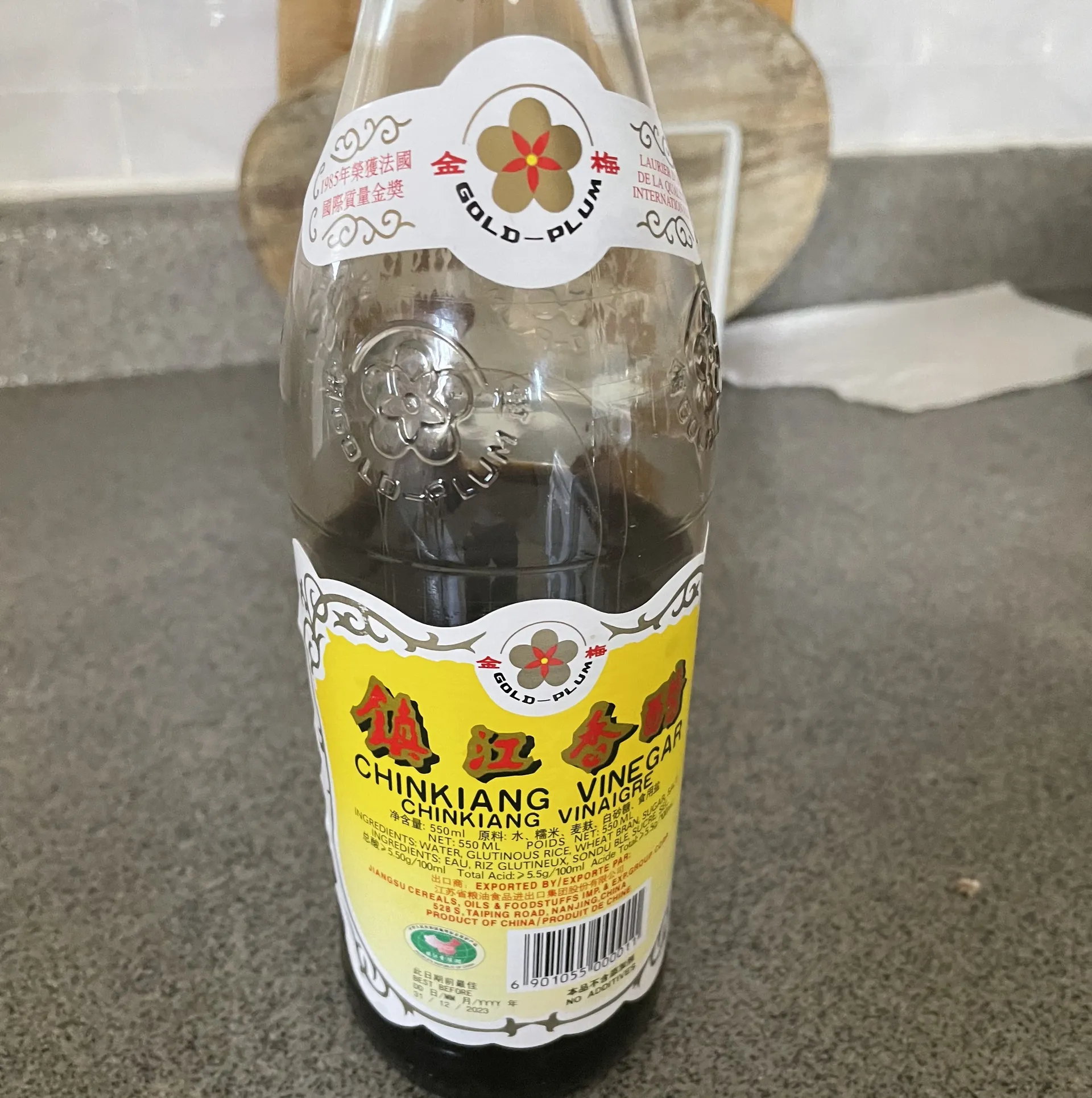
Instructions
Cut the ends off the cucumbers and discard.
Smash the cucumber by hitting it with the side of a heavy knife
Chop the cucumber into bite-sized pieces (crosswise diagonally) and place into a serving bowl
Add the salt to the cucumber and let it marinate while preparing the glaze
Tip: you can taste the cucumber – if too salty, simply wash some salt off
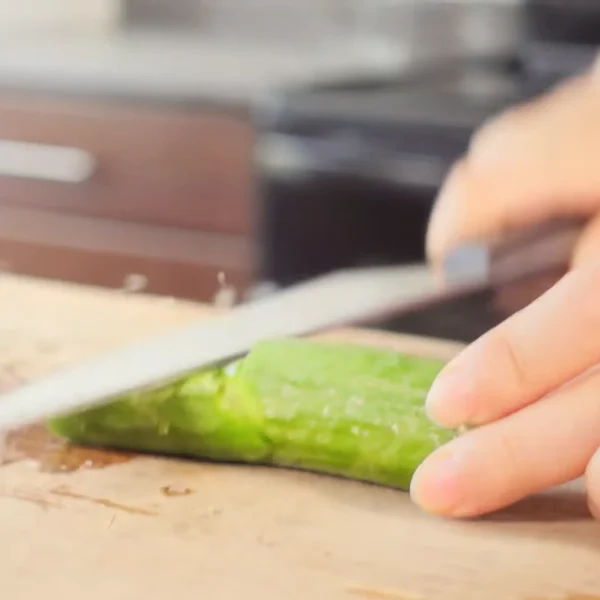
(Winter) Option: Hot peppers
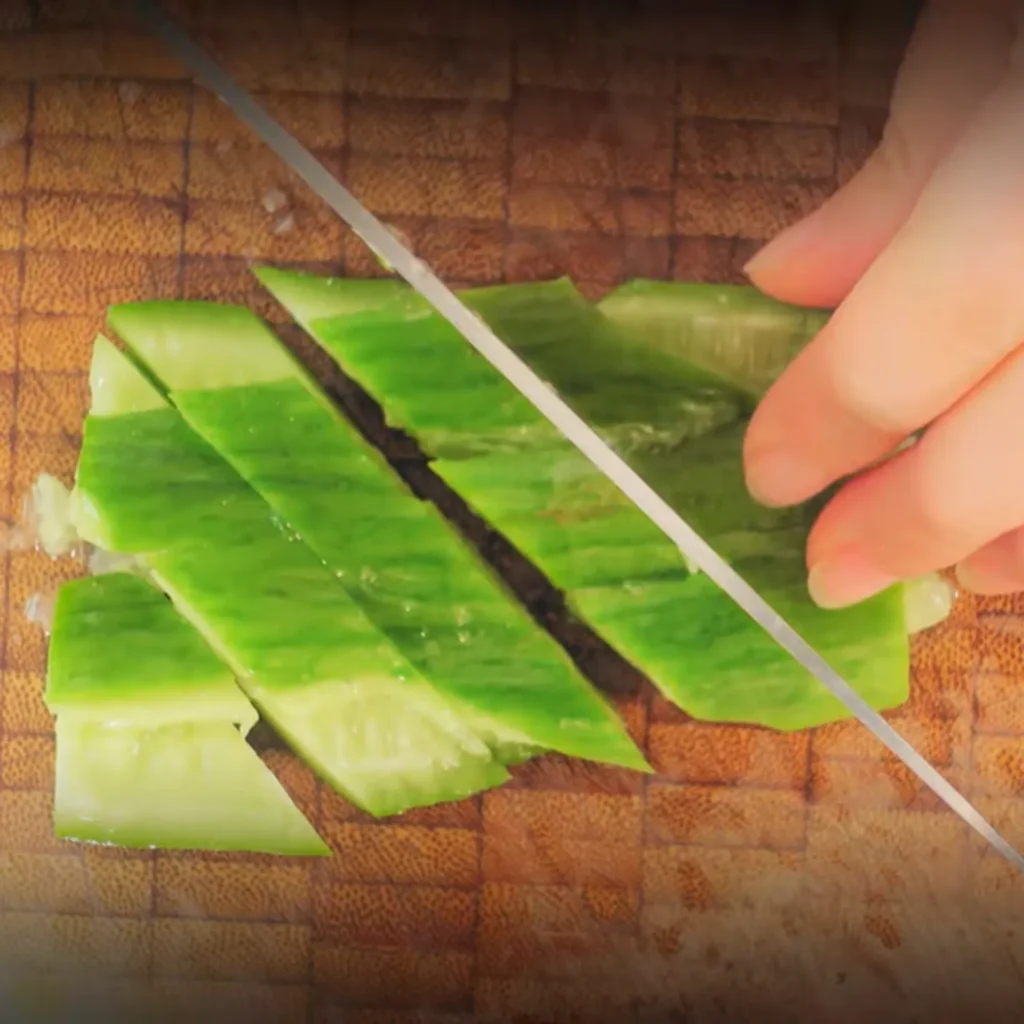
Cut the chilis into small pieces or smash with a mortar and pestle
Add the chilis and oil to a small pot and heat briefly on medium heat until fragrant (about 2-3 minutes, remove from heat before the chilis burn)
Cut the chilis into small pieces or smash with a mortar and pestle
Add the chilis and oil to a small pot and heat briefly on medium heat until fragrant (about 2-3 minutes, remove from heat before the chilis burn)

If you have a mortar and pestle, it’s good to smash the garlic rather than slice and dice it. Smashing it contributes to releasing the flavors and helps it stick to the cucumber. And removes any last bit of stress.
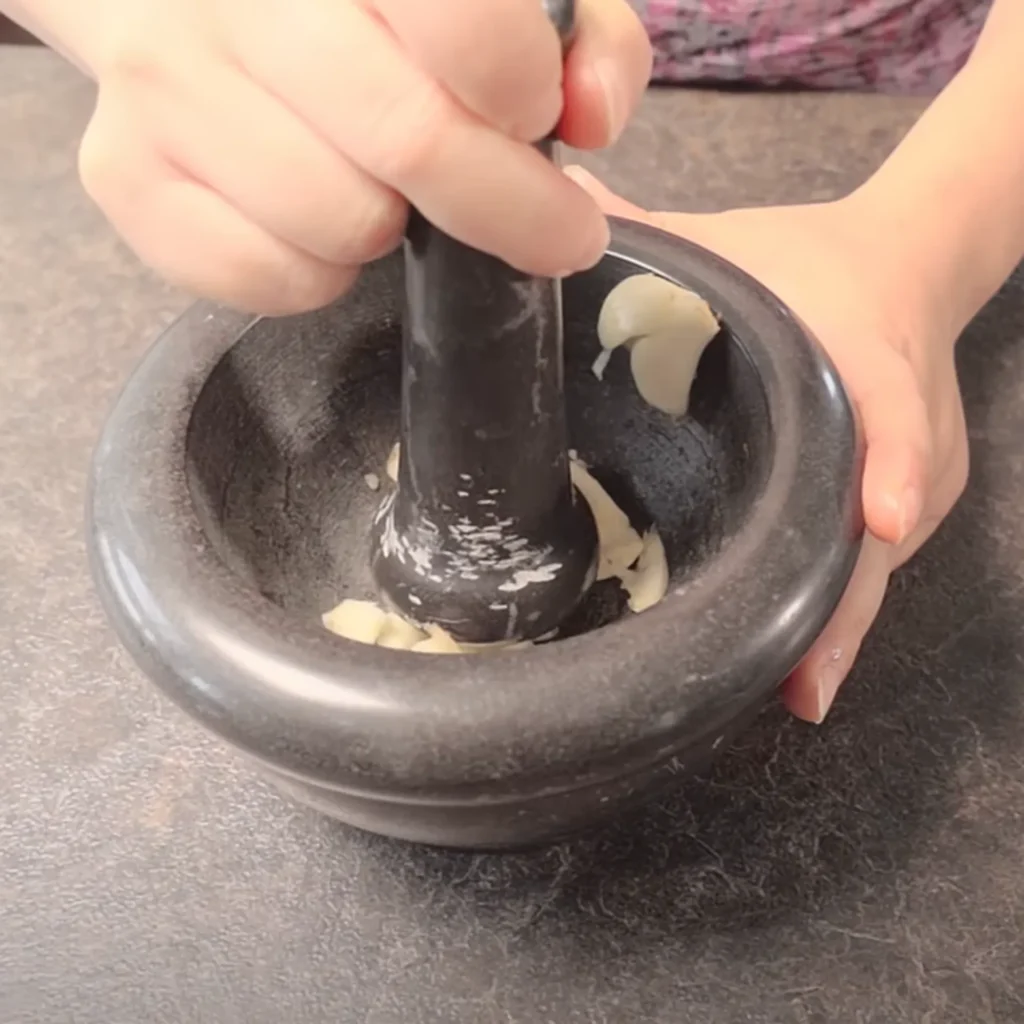
Make the Glaze
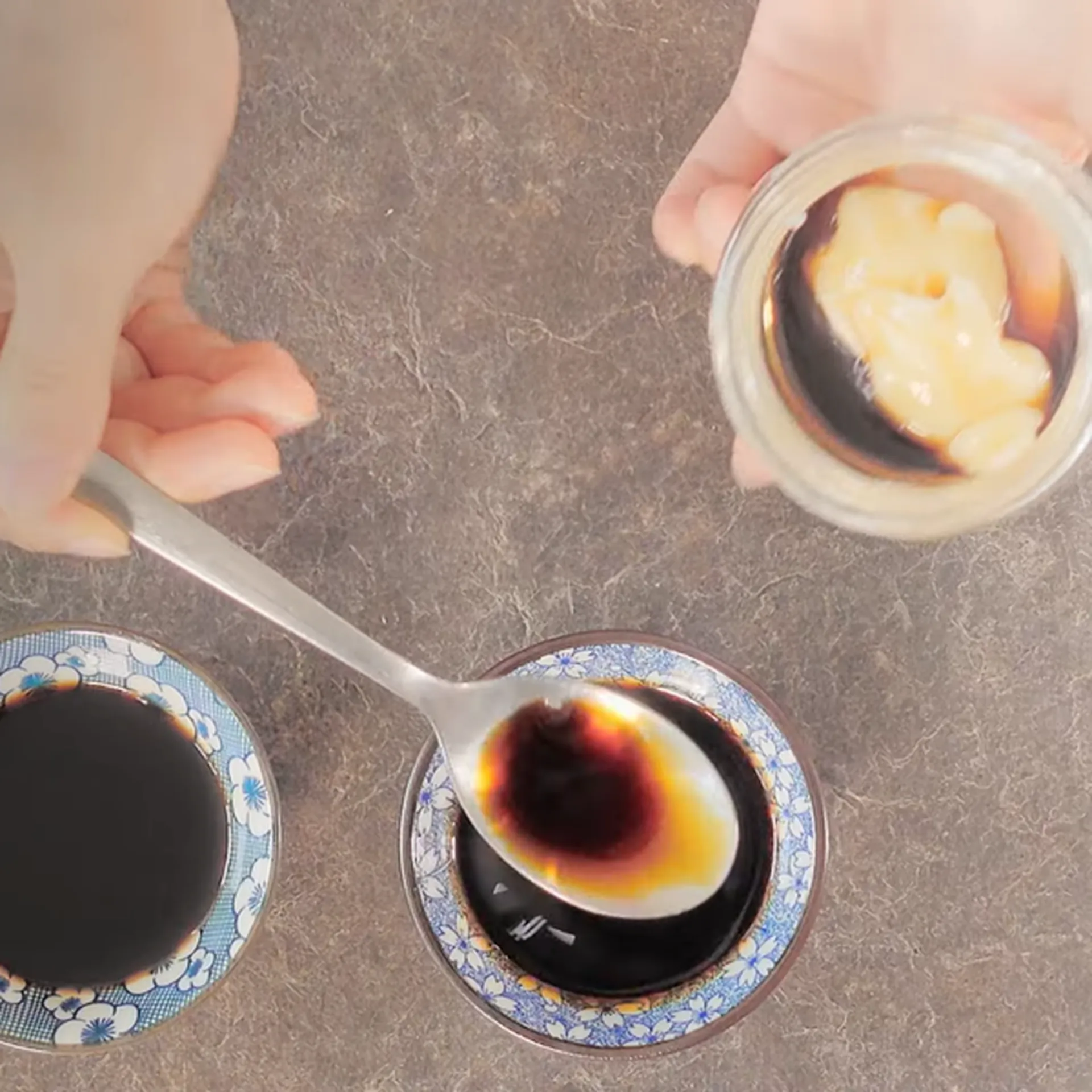
Add the raw honey, soy sauce and vinegar to a small, lidded jar (empty glass WEH jars work great!) and shake to mix.
Combine and Serve
Drain excess water from the marinating cucumber
Add the garlic, chili oil (optional), glaze and sesame oil to the cucumber and mix
This refreshing side dish is ready to serve!
Let us know in the comments how it turned out for you. If you’ve added anything else that improves the dish, we’d be happy to hear about that too!
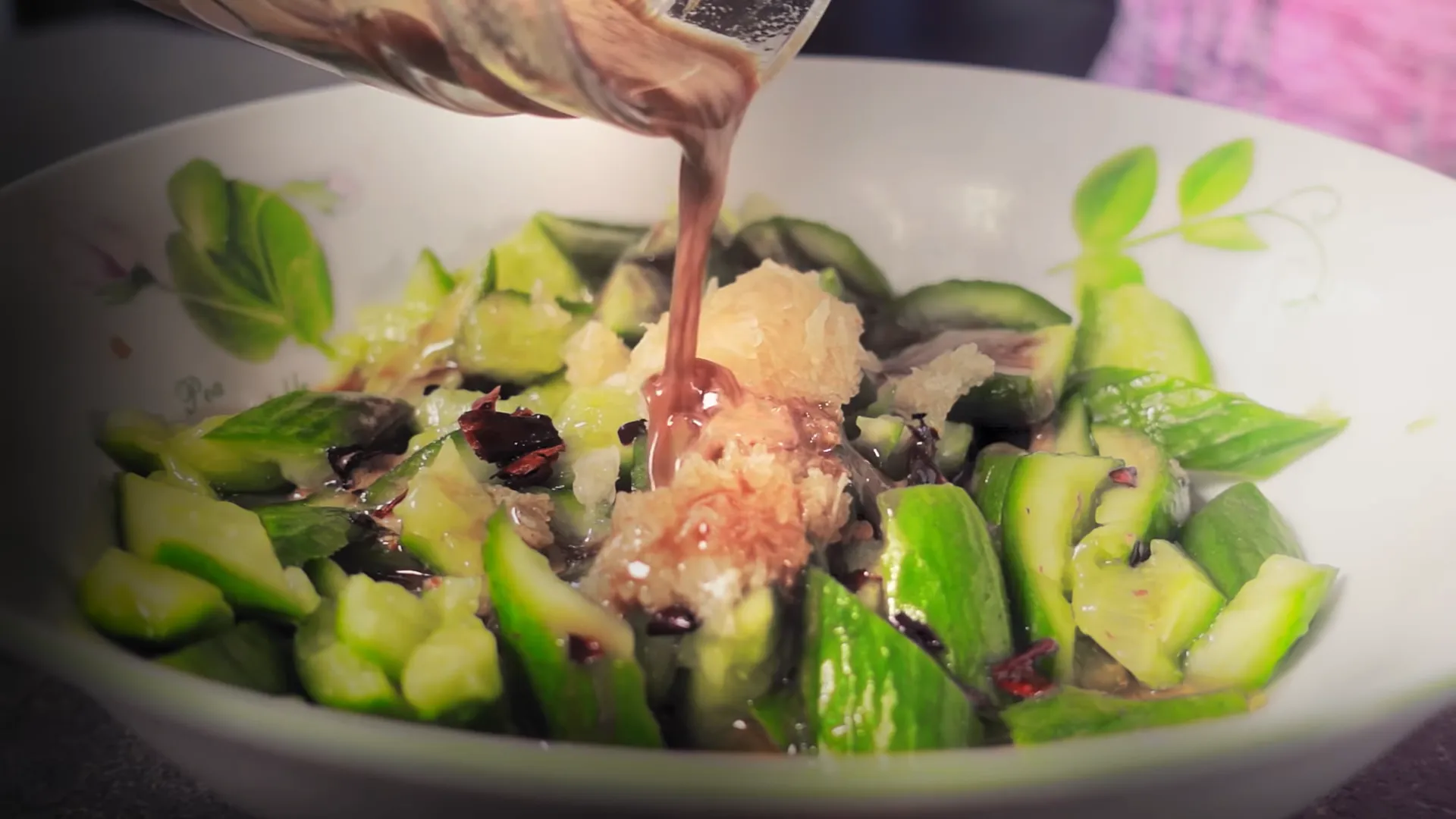
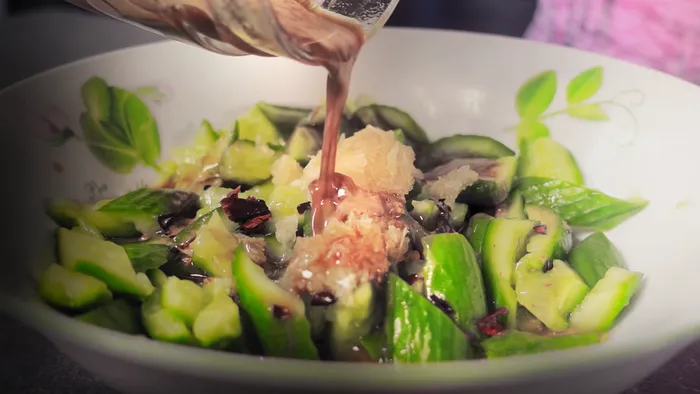
Share this story
